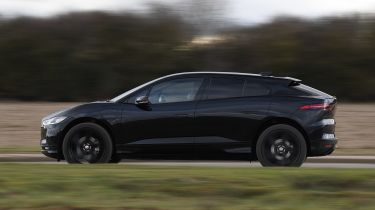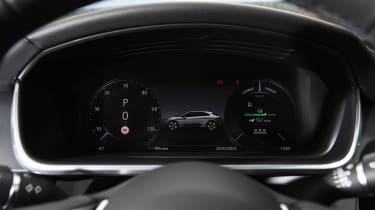Jaguar I-Pace review - Range, charging & running costs (2018-2024)
Charging the I-Pace will cost you a lot less than filling a conventional SUV at a fuel station
As with any electric car, buying an I-Pace is certainly going to save you money on everyday running costs. Charging the battery will be far cheaper than putting petrol or diesel in a conventional SUV. There are big savings to be made on company-car tax and the London Congestion Charge, too. However, the I-Pace still comes with some of the traditional expense of owning a Jaguar – insurance will be expensive and consumables such as tyres will cost more than average, too.
Jaguar I-Pace range and charging time
The I-Pace is an expensive car to buy but a cheap one to run; electricity is much cheaper than petrol or diesel and fewer moving parts compared to a conventional car means there’s less to service and replace. Zero CO2 exhaust emissions mean the I-Pace is in the lowest Benefit-in-Kind bracket for company-car tax, making it an attractive proposition for business customers. If you regularly drive the car in central London, you won’t have to pay the Congestion Charge either for the foreseeable future. More towns and cities are introducing emissions-based restrictions and charges over the coming years, so the I-Pace could well prove useful in this regard elsewhere in future. The only sting in the tail is the high cost of insurance.
The I-Pace has a 90kWh battery that gives the car a claimed range of up to 286 miles on 19-inch wheels, dropping to 277 miles on cars with 20-inch wheels, and 261 miles for the 400 Sport. This falls short of the of the more expensive Tesla Model X Long Range, which is capable of 360 miles. In real-world testing, we've found a range of roughly 220 miles is more realistic, which is just ahead of the distances we've managed to extract from the Audi e-tron and Mercedes EQC.
More reviews
In-depth reviews
Jaguar says a 100kW charger can add a range of around 78 miles in 15 minutes. A 50kW ‘rapid charger’ of the kind you find at motorway services will charge the I-Pace to 80% in around 85 minutes. The 2020 update introduced 11kW charging capability, meaning a full top-up via a compatible home wallbox takes around 8.5 hours. However, most standard wallbox chargers are limited to charging to speeds of 7kW, meaning a zero to 80% charge takes around 13 hours – acceptable if you’re charging the car overnight for use the next day, and the bare minimum for reasonable charging times. A three-point plug is really for emergencies only, taking 24 hours to charge to 80%.
The I-Pace is exempt from annual VED (road tax) because of its 0g/km emissions and it’s also exempt from the surcharge due on cars costing more than £40,000, which was dropped for all electric cars sold after April 2020.
Insurance group
The entry-level I-Pace R-Dynamic S is in group 49 of 50 for insurance, while other trims are in the top band, so premiums will be expensive. The rating is high because the car is powerful and has a high price tag – the Tesla Model X is in group 50 for the same reasons.
Warranty
The battery in the I-Pace is covered by an eight-year/100,000-mile warranty, while the car as a whole is covered by Jaguar’s standard three-year/unlimited-mileage warranty. Tesla covers all its cars with a four-year/50,000-mile warranty, while its battery warranty is eight years/unlimited mileage.
Servicing
Electric cars have fewer moving parts than those with traditional petrol or diesel combustion engines, so on average they require less maintenance. Unfortunately, servicing remains expensive because, despite the I-Pace only requiring attention every two years or 21,000 miles, a three-year servicing plan costs around £1,000. We'd recommend consulting your Jaguar dealership about individual servicing costs before opting for this, as they might be cheaper.










